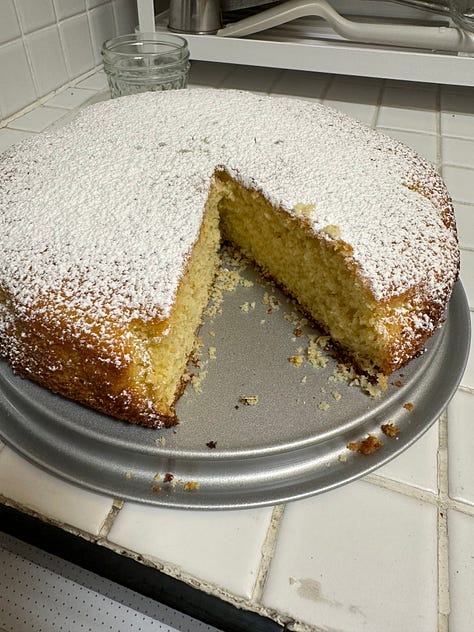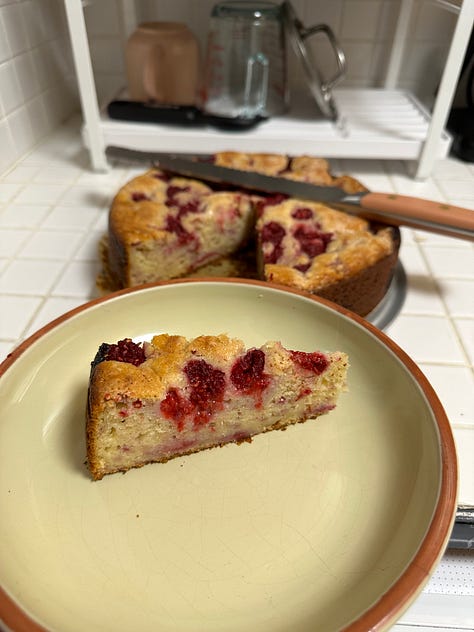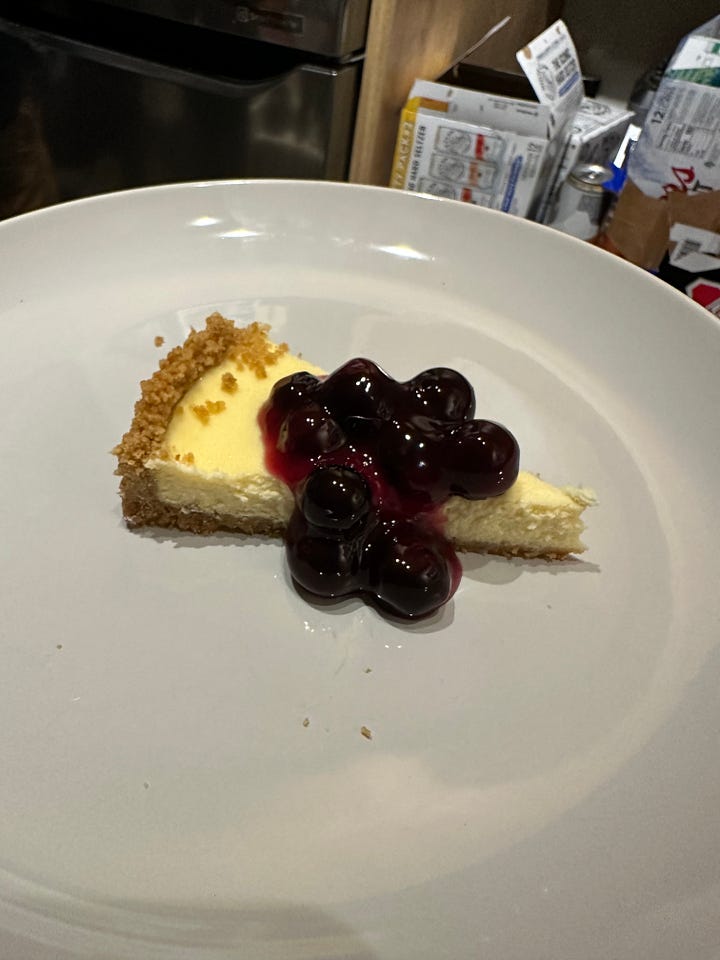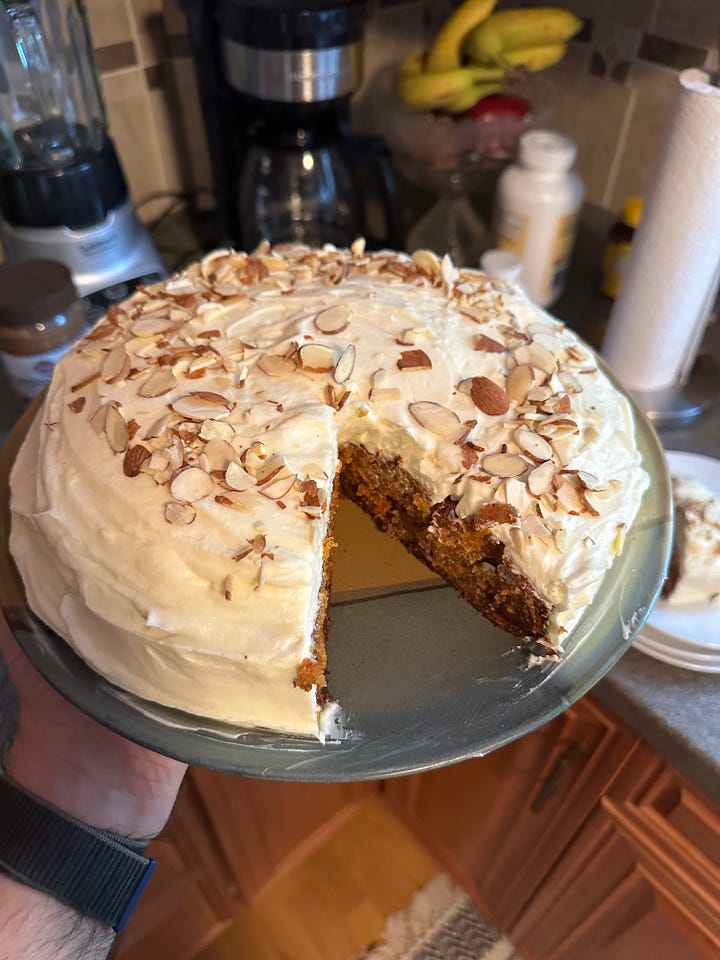I.
Most mornings you’ll find me at a neighborhood coffee shop with a journal open in front of me filled with messy, barely legible, handwritten entries. I arrive around 7:15 / 7:30 am. I’m, more than likely, one of the first customers of the day, though you’ll never catch me walking in right at 7:00 am. That’d be mortifying. I’ve held this ritual for more than a month now to the point where the barista begins to prep the espresso for my iced americano as soon as I walk in. I tend to sit at one of the tables by the large windows on the far right side of the cafe. This allows me to stare out onto Atlantic Avenue and space out a little between my thoughts. I’ve been writing at least 3 pages a day. These “morning pages” are from the self-help book The Artist’s Way and are used as a way to unlock your creativity, process emotions, and observe the world around you. I’ve stopped reading The Artist’s Way a few weeks ago — I’ll return to it eventually, I promise — but I’ve thoroughly enjoyed writing these three pages daily. In fact, on the days where I don’t immediately sit down and write, I feel anxious and off. I get this feeling that I have to release something from me and I can’t shake it until I sit down and write.
I’ve been an aspirational journal guy my entire life. I love buying journals, each blank page filled with limitless hope, but I’ve never actually completed one or created a routine strong enough to stick. I tell myself I’ll write every day but, historically, I’ve only written when times were bad. When I’ve needed to process interactions or events or people in my life, I’d turn back to the journals I’ve acquired over the years and, without shame, mark the date six to seven months from the last entry. There are a few moments in my life where I did journal consistently enough to paint a picture of my emotional landscape during turbulent times. I’ve re-read entries recently that made me feel slightly embarrassed by what I’ve written or thought, but, I forgive myself and give myself grace for the fact I dealt with things the best I could with the emotional maturity and support I’ve had at the time. What felt like the end of the world for me in those moments now seem like mere blips, a fascinating way to reexamine yourself and your life’s journey.
What has felt revolutionary to me, though, in writing these three pages every day is the physical act of writing. Do you remember the last time you’ve had to write more than a page? For me, I think it was college when I had to write final exams in those tiny blue books. I would profusely apologize to professors about how terrible my handwriting was. From a distance, you’d think my handwriting is beautiful. It looks clean and flows nicely with lovely curves. Then, when you actually sit down and you try to read it, you wonder who hurt me. My mother, in her stark and direct tongue, once told me my handwriting looked like I had just come out of solitary confinement. Everything is so tiny. My handwriting is a mix of controlled and loose. Letters are missing. Loops and crossed lines exist where they shouldn’t. Words become amorphous. That’s fine with me though. Eventually, from context, you can figure out what I’m saying. My thoughts outpace my wrists but the mere act of striking the paper with my pen satisfies what I need. The thought has left me. I am free from it. It exists outside of me.
Flipping through the journal all you can see are endless rows of black ink. Thoughts and feelings and experiences transcribed. Physically writing these down and forming words and sentences out of your nebulous inner workings bring such intentionality and focus to yourself. Every morning when faced with the blank first page I worry about having nothing to write about. Eventually, like a waterfall, all flows out of me. I talk about what’s happening to me now. I think about what’s happened to me in the past. I write about things that have brought me joy. I assign myself mantras. I hype myself up. I let go of what I’ve held inside. I convince myself that when I finish these pages I’ll be closer to being whole, a more grown version of myself. As I step deeper into my subconscious, around the third page, I feel my body catching up. My wrists cramp. My fingertips have stray pen marks from brushing against half-dried words. My neck stiffens after sitting at an angle to write everything down. When finished, I pull the strings on my notebook to tomorrow’s page, let out a sigh, and stare out the window. Remembering my iced americano, I grab the glass and feel the condensation, a reminder that time has passed. This routine grounds me in the present.
II.
I work out. I have been doing so for more than two years now. If you told the younger version of me that this is who I am now, he wouldn’t believe you. He’d probably also not care too much. He’d be too busy playing his Gameboy and eating bowls of Rice Krispies cereal in front of the TV. When I say I work out, I actually mean I love working out. Genuinely. That’s crazy, right? But, to get up every day knowing you’re about to lift heavy weights to the point of exhaustion and still do it anyway means you have to love it on some level. I started out as all beginners do: knowing nothing and feeling ashamed and guilty about how much I did not know and could not do. Chris, my trainer of two years, must be cursed because his punishment is working with me, a man who is never fully satisfied and constantly pushes the goalpost further on what he wants to achieve and accomplish. His blessing, however, is my eternal gratitude and friendship. Fair bargain I think.
When we started working out together, Chris made me do this horrendous exercise called a “Bear Crawl.” The first few times I wanted to puke after. Essentially, you’re in the quadruped position on the turf. Your palms are on the ground as are your toes. Your legs are bent with your knees hovering slightly over the ground. From this position, you are tasked with crawling forward, moving opposite arm and leg in tandem. Your left arm and right leg move forward, then right arm and left leg, as you traverse towards the other side of the turf. Your hips must stay aligned, careful not to raise them too high either, and your core has to be tight. Once on the other side, you turn yourself around and return to your starting position. I’ve always hated this exercise and still do, as I was reminded this week when we re-visited it. However, I always complete the exercise because I know that it is for my benefit. At times, if we’ve progressed well enough, Chris will put a weight on my back, challenging my form and determination further.
What this exercise, and many others, exemplify for me is everything I love about fitness. I thought I knew my body before starting training. I mean, I lived in it for 29 years at that point. But, I was detached from myself in a way I never realized. I hardly ever thought about my movements or why I was so lucky that I am able to move in the ways I can. I didn’t know that our muscles work in conjunction to push and pull us through various planes of motions. I could not mentally target different muscle groups or zero in on which muscles would be involved in a movement. I did not know how much my body could accomplish or how much demand I could put on my body to see it grow. I had complete ownership of my physical body and for years I was ignorant to the power of that knowledge.
Exercise grounds me in the physical now. For movements like squats and deadlifts, I begin by centering myself. I plant my feet firmly on the ground ensuring they’re the correct width apart. I can feel the turf underneath my toes. I breathe in fully and engage my core feeling my chest fill with air and pressure. Both of these actions ensure I am stable and prepared for the weight I’ll be working with. I focus on my form. I think about my arms. I think about my hips. I see the motion in my mind’s eye before I complete it. When ready, I move through the motion, trusting my body. I do these exercises week after week after week. Determination and persistence are key. I have to want it and I have to do it every day. These movements add up. Gradually, I’ll challenge myself further. I’ll add weights when movements feel too comfortable or easy. I’ll change planes of motion, moving left and right instead of up and down. I’ll push my mobility feeling my body hit depths it could not before. I’ll add in single arm or single leg movements to ensure I’m balanced. I adapt and change and grow.
My fitness journey has evolved and meandered over the years but I’ve stayed as consistent as I can. These routines save me. When life becomes chaotic or turbulent and I miss out on a week or two, I begin again when the calm arrives. Other times, I force the calm by beginning again. I focus on form. I focus on breath. I feel the ground beneath my feet, the weight of the kettlebells in my palms. I center myself. I push and pull and remind myself that my body is mine and I exist in it. Things may be out of my control in other parts of my life, but I can control this. I can control how my muscles move. I can control how I show up. I can accomplish and I have accomplished and I can keep going. I am physically here. I am in the now and I am in the present.
III.
A man that I liked and cared for told me he loved desserts, so I learned how to bake. I don’t like sweets and never have been a dessert person, but I wanted to show my affection. I picked up Alison Roman’s dessert cookbook Sweet Enough which has a series of recipes for desserts that are sweet but not too sweet. Perfect. Without much idea of what to bake or even how to bake, I flipped through the pages for something that vaguely looked easy and also could be delicious. I decided on the “perfect tangy chocolate tart” not because it was the third recipe in the cookbook and I was already overwhelmed but because chocolate seemed romantic and a good choice. I was right. I gathered the ingredients a few days before including buying a springform pan. I did what I always do—boldly moved forward with slight anxiety but delusional confidence. I did not tell him either that I was doing this. If I failed, I could at least pretend I never tried in the first place. The secret would be safe in my guilty conscience and probably would only reappear in stress dreams for years to come. That’s fine.
That Friday, I placed all the ingredients out on the counter. By then, I had read the recipe four hundred times. Well, that’s an extreme exaggeration. Three hundred times, at least. I knew what I had to do. I started with the crust. I mixed the flour, sugar, cocoa powder with melted butter. With my hands, I took the wet sand-like mixture and pressed it into the pan. Into every crevice, I pushed the mixture feeling the slight grease from the incorporated butter. Using a measuring cup, I flattened and packed the mixture praying everything was as even as it looked. Into the oven it went. With the filling, like I did the crust, I measured all the ingredients out on the scale ensuring they were the correct weight in grams. I mixed milk chocolate pieces with dark chocolate pieces and poured heated heavy cream and honey over to melt. With a spatula, I mixed the ingredients in a scooping motion watching the forms of chocolate melt together. Lastly, I added the sour cream and stirred resulting in this glossy, thick, and lush filling.
The dessert was a success.
Since then, I started baking more and more experimenting with different recipes and expanding my repertoire. For this person, I baked a lemon pie hand whipping the cream on top. For Valentine’s Day, I made a chocolate pudding which we ate by dipping and dunking gingersnap cookies. The last dessert I made him was a raspberry ricotta cake. The raspberries bled into the mixture creating this beautiful blend of beige and red. With every bite you could taste the slightly tart raspberry and the hint of the lemon zest. When we broke up, I worried that I’d lose my love for baking, but in the months since, I’ve realized that while he may have been the person who awakened this talent and hobby in me and I am thankful to him for doing so, it was my own to continue to practice.
Baking requires precision. I think that’s why some people don’t like it as much. They love the creativity and the adaptability of cooking. You add things here. You make it your own. You try things out. Baking is a lot of rule following. It’s measurements and timing and being exact. That’s part of the reason I love it. I know if I follow directions correctly, I’ll making something. From all the ingredients on my countertop, I know I’ll have a result. I pull out the scale. I painstakingly weigh my ingredients. I use multiple bowls and pans. My hands move from ingredient to ingredient. I mix with control. I am physically in the space. My hands are creating. I am a steady person by nature. I am calm and I am measured. I gravitate towards order and routine. Baking allows me to focus and pull the best attributes about myself together to do something.
I now bake for my loved ones. For Christmas, I made my family the same tangy chocolate tart. Most of them loved it. A few complained it was too chocolate-y. That’s fine, they’re Greek. Greeks love to complain. For a gathering upstate, I baked a chocolate sheet cake. While the dessert was delicious, I quickly learned that 18 X 24 is a large size for a sheet cake. There were many leftovers. My friend Fred had a birthday a few weeks ago and I asked him what dessert he’d like me to make. He said cheesecake. I’d never made one before. Cheesecakes seemed fussy. They are. But, I persevered and I followed the instructions. Trusting the advice of a friend, I decided to add a blueberry jam on top which pushed the dessert from good to great. I was very proud. I was also happy to make something for someone who means a lot to me as a friend. For my family this last Greek Easter, I made a carrot cake. In the kitchen, I measured and mixed ingredients while my mother and my brother’s fiance helped grate carrots and cut dates. My mother remarked that now I was the one baking while she was the one who was assisting — a reversal and a sign of aging and growth. The carrot cake was one of the most delicious and meaningful things I have made so far.
In my day to day, there’s not much room for me to create anything tangible. I work on my laptop all day and I do work that, if you squint, is meaningful. But, sometimes it feels as though there’s nothing left to show for it. There are no dirty dishes in the sink. There are no leftover slices. There’s no seeing the satisfaction on people’s faces. To physically create something for someone else is an act of love. Baking grounds me in reality. It focuses me on the present. It makes the world around me real and tangible and maybe just a little bit sweeter.
Here are all the desserts that you’ve been patiently waiting for:










